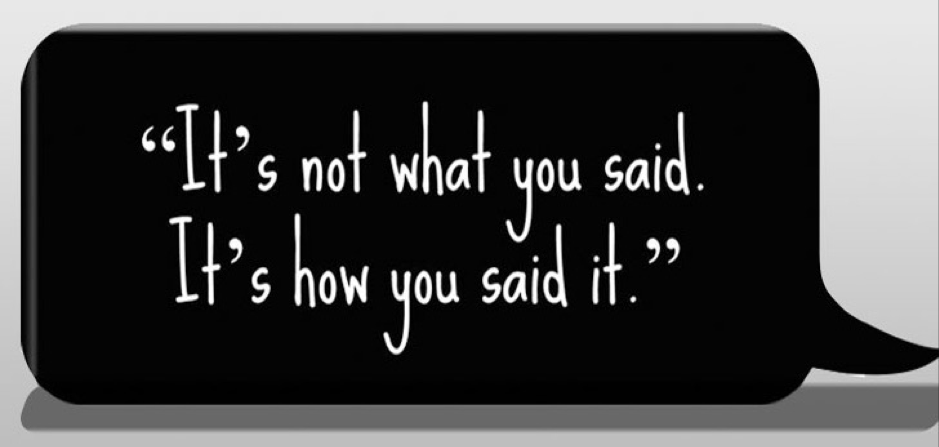Vaibhav recently passed out from college and had quite a handful of interviews lined up. He was burning the midnight oil to find out ways to excel in his interviews and see himself as an employee in a renowned organization. His uncle, Sivaranjan, is a corporate honcho in one of the major corporations and is helping Vaibhav in decoding the professional world.
Wow, uncle, our conversations are becoming a holy grail of the corporate world. Till now we have covered the myths and realities of professionalism, the power of effective communication skills, the importance of nonverbal communication – body language, and power dressing. The way you have walked me through the dos and don’ts thus far, has left an indelible impression on me, said Vaibhav stirringly.
Sivaranjan, Vaibhav’s uncle has been like a “manna from heaven” who is setting stepping stones for Vaibhav, and many like him astir their way into the corporate world.
So Vaibhav, let me tell you a story of an esteemed professional, who was the CEO of a renowned corporation just like me, said Sivaranjan. His job responsibilities required him to make decisions in a matter of five minutes on the projects going on for months. Due to the need for quick decision-making, he started using a rule: He approved the proposal if the person making it appears confident. If not, he declined. It might appear to be a reasonable approach. However, my beliefs suggest otherwise. The CEO clearly believes he understands what a confident person sounds like. However, his decision, while correct for some may be entirely incorrect for others.
Communication conveys more than saying what you actually mean. Because language is a learned social behavior, how you say what you mean is critical and varies from person to person: Cultural experience has a significant impact on how we speak and listen. Although we may believe that our ways of saying what we mean are natural, we can get into trouble if we interpret and evaluate others as if they felt the same way we would if we spoke the same way they did.
We all have heard a phrase over and over again, “We need people who can communicate.” “Communication and interpersonal skills remain at the top of the list of what recruiters value the most.” According to Harris Interactive/Wall Street Journal business school survey, which was released in September 2007. So, why do we ignore communication’s importance until it becomes a problem? One reason could be that we don’t take the time to quantify what we mean.
Today, we will deep dive into the realm of effective verbal communication, said Sivaranjan intensely.
What Is Verbal Communication?

The act of sharing information between individuals through speech is known as verbal communication. Verbal communication refers to any interaction that involves the use of spoken words. Personal conversations, staff meetings, phone conversations, formal and informal conversations, and presentations are all examples of oral communication used within an organization.
Phone calls, face-to-face meetings, speeches, teleconferences, and video conferences are all examples of verbal communication outside of the organization. Effective verbal communication skills enable business managers to communicate more precisely with their subordinates. Employees with excellent communication skills are similarly highly valued and sought after in any organization.
Vaibhav, the way you present yourself for an interview and the way you speak to your interviewers will decide your future with that organization. People who are able to articulate well and express themselves well, always stand out in any organization. The organizations also want people who are fluent and well-versed to be their brand ambassadors because when you go and meet anyone, you are not representing yourself as an individual, you are speaking on behalf of your organization.
These are a couple of pointers to understanding the prominence of communication in any workplace.
- The way employees communicate with one another reflects an organization’s image, which could be the first or last impression.
- Good verbal communication skills foster excellent business relationships with other organizations, customers, suppliers, and so on.
- Good verbal communication in the workplace is critical for companies with a diverse workforce. It aids in the reduction of barriers caused by cultural and linguistic differences. Many multinational corporations provide training to their employees in order to instill effective communication skills, which prove to be extremely beneficial in the long run.
- Effective verbal communication between the employer and the employee boosts job satisfaction.
- Receiving up-to-date and accurate information from their superiors amplifies their productivity and confidence.
- Individuals with excellent verbal communication skills are more likely to share ideas, thoughts, and concerns with one another.
Did you understand Vaibhav? This is the magnitude of verbal communication in the corporate world. Communication is the alliance that holds a company together. It is the medium through which we exchange ideas, learn from one another, and, perhaps most importantly, connect with one another.
What Are The Constituents Of Effective Verbal Communication?

Vaibhav, it is unfathomable to find ourselves at work without verbal communication. There is so much to be done verbally, giving instructions, raising a query, making arrangements, and so on and so forth. The motive of communication at work is to build good relationships with stakeholders, coworkers, superiors, and customers, to be a part of an efficient team, and enhance your professional skills down the line, said Sivaranjan.
These are a few ingredients to successfully complete the recipe of effective verbal communication.
Communication fluency

Just imagine Vaibhav, you are new in your company and you have a query, and you have no idea how to convey it to your team leader. This is where communication fluency plays an important role, it helps you exchange ideas, facts, feelings, information, and channel your perspectives.
Fluency is the concept and phenomenon of becoming skilled in a specific area. As a result, communication fluency is the act of becoming excellent in a conversation by learning all of the necessary elements and skills. Good communication skills are the most important factors in achieving success in the workplace. The reason for this is that effective communication is essential for increased sustainability.
Choice of words

People should choose their words to connect with others, according to Stacy Philpot, head of Deloitte Consulting’s Leadership Practice. “The most influential leaders are those who consider how to energize their people,” Philpot told Business News Daily. “They understand what makes their people feel confident and what drains their energy.”
Rather than discussing plans or tactical objectives, they can connect their employees’ current circumstances to some kind of opportunity or outcome that they will care about. The ever-changing business language necessitates executives who can approach their words with caution and care, and adapt their communication style as needed.
Pace of speech

John F. Kennedy spoke quickly, very quickly. He holds the Guinness World Record for the fastest speaking rate. He spoke 327 words in one minute during a speech in 1961. That’s roughly three times faster than the average conversation speed. However, during JFK’s inaugural address, he remarkably slowed his speaking rate to 96.5 words per minute, the slowest in the previous 60 years of inauguration speeches.
JFK was a master of pacing, knowing when to fire up the audience with a barrage of words and when to slow everything down to carefully measure each word to highlight the meaning of his message.
Pacing can be one of your most powerful tools. The ultimate goal is to be able to converse at a conversational pace. Do not try to speak at a completely even pace, measuring out every word evenly: this may come across as monotonous and boring. Your speech will be more engaging if you use a combination of slow, fast, and medium speeds.
Articulation

The ability to express a thought clearly and effectively is referred to as articulation. The beginning of communication is articulation. Because your audience does not have subtitles or a pause button, it comes into focus when you speak. Oral communication ability and intelligence are related to being articulate. Accent and articulation are distinct concepts. An accent is the inflection of words, whereas articulation is the ability to express oneself clearly.
Deliver your message in as few words as possible. Writing is an excellent way to improve your articulation. Take notes on conversations or ideas. Read them slowly and clearly aloud. Check to see if it feels right. This procedure will assist you in improving your oral communication skills. If you come across an unknown word, don’t be afraid to pronounce it. It’s okay if you’re wrong. You can always go back and correct yourself. Make sure you pronounce each syllable of each word clearly and without stuttering.
Pauses

Now you might be wondering Vaibhav, “How can silence make a conversation interesting?” It’s not as simple as it sounds. It is difficult to practice silence at the right time and right place. Make a deliberate choice. Make a promise to yourself that you will pause. A well-chosen pause will assist you in better and more structured conversation construction. When negotiating, a well-timed pause will allow you to gain control of the situation more quickly. A pause relaxes your mind and body, making your conversation more meaningful and fruitful.
To begin, the simplest and safest method is to use punctuation marks such as commas and periods as reference points for when to use the pause. In writing, punctuation marks assist us in structuring our sentences; pauses provide the same level of value when speaking.
Tone of voice

The tone of voice in communication can be defined as the manner in which a person speaks to others. Often, how you say something is just as important as what you say. You may adjust your tone of voice depending on whom you are speaking to and the context of the situation.
The sound of your voice contains elements that add meaning to what you’re saying. There are subtle nuances that change the meaning, whether spoken or unspoken. For example, two people may say the same thing, but the message is received differently if they use different vocal tones. Another example is that even if a person is speaking in a foreign language, you can tell how they feel by listening to their tone of voice.
It is just phenomenal the way different constituents come together to create a symphony of effective communication. I am amazed to see the broad spectrum of communication and its hold over our individuality, exclaimed Vaibhav.
To this Sivaranjan added, “Measure what you treasure,” as professionals say, refers to aligning rewards with corporate goals. Communication follows the same philosophy. You will recruit, train, and hire for communication skills if you value them. Oral and verbal skills are a basic foundation; organizations must also consider how such skills are used to inform, persuade, coach, and inspire. Years of practice and example are required. Leaders must set an example by communicating clearly and teaching others to do the same.
Vaibhav, now that you have well-understood the importance of communication in the corporate world. Moving forward, I would like you to implement all that you have learned in your interviews and then we will discuss it further in our next meeting, said Sivaranjan.
https://hbr.org/1995/09/the-power-of-talk-who-gets-heard-and-why
https://bizfluent.com/info-7876762-importance-verbal-communication-business.html
https://www.marketing91.com/verbal-communication/
https://www.multibhashi.com/how-to-be-a-fluent-communicator/
https://hbr.org/2009/04/five-things-leaders-can-do-to
https://thefluentlife.com/content/importance-fluent-communication-workspace-proficient-english/
https://writinghat.com/importance-of-articulation/
https://www.soundwave.global/why-is-tone-of-voice-in-communication-important-at-work/
https://assets.entrepreneur.com/content/3×2/2000/20160424121459-shutterstock-265399991.jpeg
https://www.elcomblus.com/wp-content/uploads/2020/12/Gricean-Maxims-741×486.jpg
https://amirarticles.com/wp-content/uploads/2022/07/Blog_2.9.22_VirtualCommunication-1200×801-1.png
https://resources.workable.com/wp-content/uploads/2020/10/Effective-workplace-communication-01.png
https://hbr.org/resources/images/article_assets/2019/08/Aug19_25_518358614.jpg
https://colinjamesmethod.com/wp-content/uploads/2014/06/Finding_Your_6ft_Voice.png
https://learn.g2crowd.com/hubfs/communication%20styles.jpg
https://silicon.nyc/wp-content/uploads/2017/07/entrepreneur-pause-communication-accent-tips-nyc.png
Written By: Jimmy Jain
Edited By: Afreen Fatima
Society of Design Thinking Professionals









